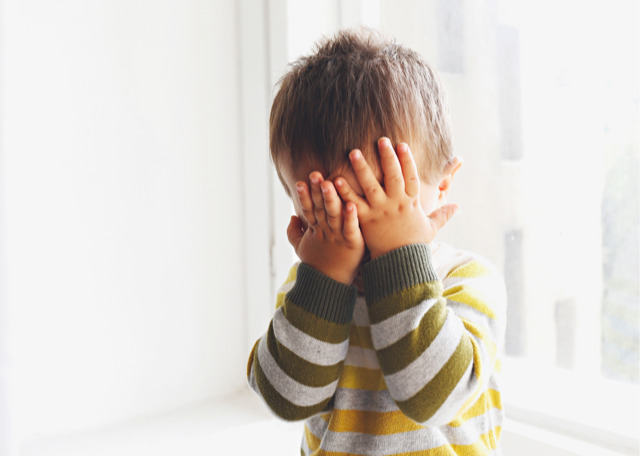Crying is a very emotionally charged subject in our society today. This is not only because it conveys strong feelings, but because of the way it has been socialized to us. People associate it with certain personality traits and behaviours. When it comes to your child, crying never feels good to hear, yet it is a fundamental part of development. The key is to truly understand it in order to unlock the benefits that are hiding behind your feelings about it.
Sign Up For Our Newsletter
Think about what feelings crying brings up for you
Before we can begin to think about our child, we really do need to look inwards first. We all bring our own baggage to the table when it comes to deeper feelings around crying. The first step is to look back to your own childhood and explore your memories and experiences that included crying. What was your first unpleasant memory? How was crying treated in your family? How did you feel when you cried?
We as parents often want to stop our child from crying, and that protection comes from our own fears we developed in our past. We may fear our child will go through the same experience we did as a child that led us to tears. We may feel ashamed or angry about our child’s crying in public because of our fear that it makes us look like a bad parent. Or we may feel that crying is wrong because we didn’t receive support to cry healthy tears when we were young.
Take some time to explore your past and if you have a partner, have them do the same. Compare notes and talk through all those emotions that might not have had much attention for a very long time.
Download our baby sleep guide of your baby’s first year’s nap and bedtime schedules for only $17 here. Create the right nap and bedtime schedule for your baby today!
Crying has been an evolutionary survival tool
Humans are hardwired to pay attention when they hear a child crying. We are also programmed not to enjoy it, and to want to make it stop. This is how we survived through millions of years of evolution. A child left unattended in a field was open to predators. Babies who cried more were better protected, fed more often and kept close to their care givers. So it’s no wonder that crying has become an instinctual tool for them. Because of this, parents are now hardwired to want to attend to a crying child. The body produces hormones that make mothers feel compelled to pick up and hold their child. But the threat of predators and hash conditions no longer exist today, the way it did when these evolutionary measures formed. We now know that there are many more reasons a baby cries, other than for critical needs.
The differences between infant and toddler crying
Although there are some similarities, infants and toddlers do cry for different reasons. Similarities would include things like pain, discomfort, and frustration. The differences may surprise you however. Infants are very instinctual in everything they do. This is because their brain is still in a primitive stage of development. They do not have the capacity to perform many more mature things like make decisions or feel complex emotions. This means when they cry, it is for basic purposes, not all of which are needs. The cry is a signal for something that they are experiencing. Frustration, discomfort, hunger, sleepiness, dislike, or pain are all reasons an infant may cry.
For toddlers, the reasons for crying are much more complex. The part of the brain that handles emotions only starts to develop around 24 months of age. The part of the brain that handles thinking, language and decision making develops later and does not mature until 21 years old. So imagine, an explosion of emotions at 2 years old, met with an underdeveloped center for complex thinking. This is a recipe for a lot of crying. Things a child used to cry for when they were an infant (tired, hungry, uncomfortable) now transition to whining or crankiness. Full blown tears and tantrums are often a result of more advanced wants or fears.
For infants, it isn’t always necessary that a parent take action when crying occurs. Feeding a crying newborn is critical, but an infant crying at the start of bedtime may just be venting about being overtired and wanting to sleep (more on why an early bedtime helps crying here). For toddlers, the process of working through their emotions and healing from their anxieties is key. This is when it is best not to stop the tears but to sit close and listen to them.
Is it harmful?
This is such a hot topic but the short answer is No. The act of crying itself is not harmful to an infant, toddler, or any age human being. The part that could be harmful, is what caused the crying in the first place. Humans have a fight, flight, freeze response programmed since birth, which has helped us through the evolutionary process. This response helped us avoid situations like getting attacked by a predator, or being socially ousted from our tribe. Even though the response still exists, many situations instigating it are no longer a real threat today.
So crying still comes naturally as a response, but humans have the ability to learn that there is no real danger present. For example, if an infant is crying due to being left in their crib (a situation that back in caveman days was dangerous), they can learn that they are safe. Read more on sleep training and how it works. There are of course instances of crying today where the cause of the crying is harmful. Those are cases of trauma and abuse, either physical or psychological. A truly unsafe environment.
Here are the many benefits of crying
We’ve talked about the evolutionary benefits to crying. Now we’re going to take a look at the mental and physical benefits, as described by Ashley Marcin.
Benefits include:
Detoxifies the body
Helps self-soothe
Dulls pain
Improves mood
Rallies support
Helps you recover from grief
Restores emotional balance
Helps baby breathe
Helps baby sleep
In babies, crying helps to release overtired energy, and in toddlers and adults it helps to metabolize emotions so we can release them in a healthy way. Crying done with a support system in the mix is a very healthy part of maintaining yours and your child’s wellness. I encourage parents to teach their children that it isn’t bad to cry, and that crying doesn’t make you a bad child. It is actually very healthy and “lets all the bad feelings out”!






